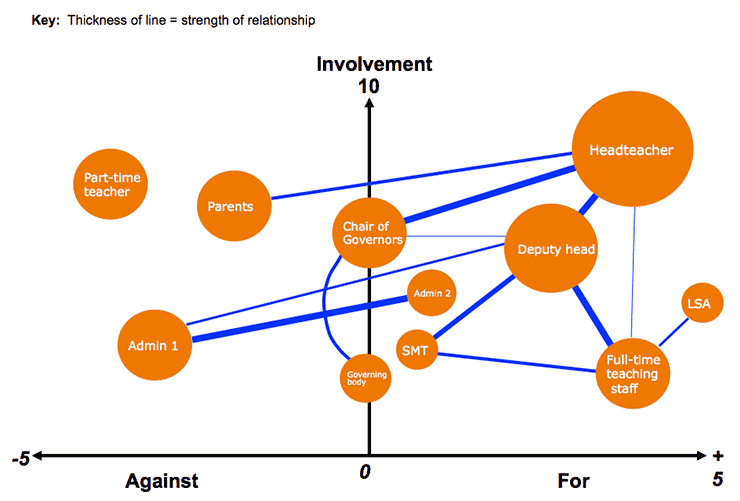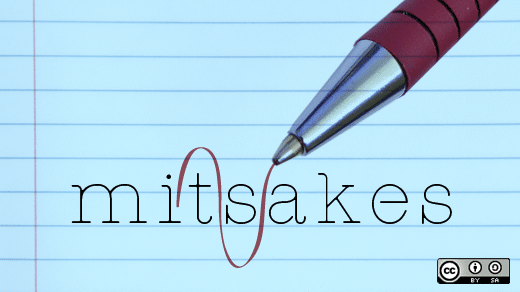Stakeholder engagement and management are critical for defining and achieving project success. Stakeholder mapping is an important tool to help you with this. This post will walk you through the process step by step using a stakeholder mapping example. You will learn how to categorize stakeholders based on their interest and impact to identify critical actors, potential saboteurs, advocates, and time-wasters. By following the steps outlined in this article, you can create a solid plan for involving the most important people in your project – your stakeholders.
What Are Stakeholders?
Stakeholders can be defined as “Anyone who has a stake in the project,” albeit this is a bit broad. A more practical definition might be: “Anyone who can create or ruin your project.”
This set of more specific stakeholders is divided into four broad categories:
1) Sponsors are frequently those who launch the project by organizing the necessary resources and assigning individuals to the task of completing it. Sponsors control the project’s requirements, and if those requirements change, they must lead the project accordingly.
2) The Project Team is in charge of carrying out the project and ensuring that it is completed. The project team is in charge of developing a solution to the project’s requirements.
3) A reference group consists of people who project teams must consult to arrive at the best solution. They assure that the solution will function properly.
4) Users are a diverse set of individuals who benefit from the project solution.
Tip: The Reference Group and some members of the Project Team may be classified as Users as well. This is frequently a very smart idea.
Stakeholder Mapping: What Is It?
Stakeholder mapping is a collaborative process of study, debate, as well as discussion that draws on many views to develop a critical list of stakeholders from across the stakeholder spectrum.
Mapping can be divided into four steps:
1) Identifying: a list of relevant groups, organizations, and individuals
2) Analyzing: comprehending stakeholder points of view and interests
3) Mapping: depicting linkages between objectives and other stakeholders.
4) Prioritization entails ranking stakeholder importance and identifying challenges.
The Importance of Stakeholder Mapping Tool
Stakeholder mapping is crucial because stakeholders are critical to a project’s success. There are usually a lot of stakeholders, which means a lot of different expectations. You’ll have a difficult time connecting with and keeping stakeholders satisfied if you don’t map their influence and interest in the project.
It is, however, a two-way street. Good communication with stakeholders provides project managers with much-needed information about the project, which benefits them in a variety of ways. It aids in risk mitigation and determining the true project goals of the stakeholders.
In other words, stakeholder mapping is the first step in developing an effective communication strategy. Projects will fail if there is little to no communication. The better the communication, the smoother the project will go, and the easier it will be to comprehend the desires of your stakeholders.
Stakeholder mapping is another tool for managing expectations. You can learn about your stakeholders’ perspectives on the project by mapping them out. As a result, as the project progresses, a project manager can deal with those expectations incrementally, bringing them in line with the project so that everyone is okay with the deliverables.
A Stakeholder Mapping Example
Stakeholder maps are intended to assist you to evaluate your surroundings by showing who can support or impede the success of your project.
The preceding mapping example depicts one method of creating a stakeholder map. Please keep in mind that this stakeholder mapping example is just one of many ways to depict stakeholders and their effect.

Although stakeholder maps can take various shapes and formats, they should always include the following information:
- They are simple to read because their objective is to be utilized as a quick decision-making tool.
- Comprehensive, because only a thorough understanding of the essential stakeholders can supply helpful information.
- The many stakeholders are organized into categories depending on their type, mutual interests, and amount of influence.
You can manage your communication with stakeholders in four ways: tightly manage them, keep them satisfied, keep them informed, or simply monitor them.
If a stakeholder has a significant amount of influence but not as much interest in the project, they should be kept satisfied, which means they require regular updates and their opinion is critical.
A stakeholder with a high level of influence and interest must be closely monitored. This entails meeting with them more frequently than the group in the “keep satisfied” category, and their feedback is also essential to any decision-making.
Your consumer base consists of people with little influence but a lot of curiosity. They, too, require progress updates, but not as frequently as the “manage closely” and “keep satisfied” groups. Those with little power and interest require monitoring, but they should probably only be notified of major milestones in the project.
How to Make a Stakeholder Map
When you’re ready to create your stakeholder map and begin the stakeholder mapping process, take the following four steps:
#1. Determine Stakeholders
A project may have a large number of stakeholders. The list you create will be in line with your organization, the project’s impact, as well as its aims. That means you may need to revise the list throughout the project.
#2. Examine Stakeholders
The following step necessitates considerable investigation. This allows you to determine how relevant they are to the project and what perspective they bring. Define the type of stakeholder they are, how much they might give to the project, and their legitimacy in doing so. Are they willing to participate? How much say and involvement do they have in the project?
#3. Participants on a Map
This is the stage at which you design your box and divide it into four sections, with the y-axis measuring the level of effect from low (bottom) to high (top) (top). You map the amount of interest on the x-axis, from low (left) to high (right) (right). Plot your stakeholders as well as the results of your analysis on the two axes using your list of stakeholders and the results of your analysis.
#4. Stakeholders should be prioritized.
Now that you’ve identified, analyzed, and plotted your stakeholders on a map, you can start planning how you’ll interact with them throughout the project. Depending on where they land on the map, you will either closely control them or simply monitor them. This is the first step in developing your stakeholder communication strategy and overall stakeholder management.
Stakeholder Mapping Best Practices
It is advantageous if you can obtain as much information about all of your stakeholders as possible. You’re curious about who they are and how they prefer to communicate. Some may only want you to text them updates, while others may prefer in-person presentations or a phone conversation. Determine the method of communication they prefer and the frequency that works best for them.
#1. Have an Open mind
Understanding the cultural or linguistic variety among your stakeholders is another component of your stakeholder mapping. If they do not speak your native language, you will need to modify your messaging. It is critical to be inclusive and understand that what is good for one stakeholder may be bad for another.
#2. Communicate Effectively
The content of Your communications must be clear. You aim to avoid jargon and also provide facts. When talking, be open and honest, and keep track of what is certain and what is not. Be open to your stakeholders’ comments and understand how they might influence your decisions.
#3. Be open and truthful.
Never withhold information, especially terrible news. The sooner you get it out there, the sooner you’ll be able to address stakeholder expectations and also answer any concerns they may have.
#4. Continue to be available
Finally, maintain open channels of communication. Maintain contact with your stakeholders, but also provide them with a mechanism via which they can reach you if necessary. Listen to what they have to say, communicate with them, and offer your own questions when they do. Communication is the exchange of information.
The process of stakeholder mapping is as important as the outcome, and the quality of the process is strongly dependent on the understanding of those involved.
Stakeholder mapping allows initiatives to run smoothly.
Neglecting stakeholder management can lead to roadblocks and setbacks down the line, which is why stakeholder mapping should be an essential tool in each project manager’s toolbox.
The success of a project is dependent on engaging and collaborating with stakeholders from all backgrounds. Understanding their motivations and categorizing them into different categories with the use of the power/interest matrix and stakeholder maps can go a long way toward ensuring your work is on track.
Stakeholder mapping FAQs
What is the stakeholder mapping tool?
Generally, stakeholder mapping is a tool used in stakeholder analysis to categorize people based on their power and interests.
What is a stakeholder engagement model?
Stakeholder engagement refers to the systematic identification, analysis, planning, and also execution of initiatives intended to affect stakeholders.






